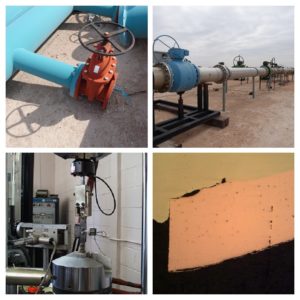Corrosion is a main contributor to degradation of materials in interaction with water, solid, and oil products.
Corrosion Assessment of Piping Systems-The purpose of our service team is to detect corrosion risks in order to rank the structures in relation to their corrosion risks and identify options too, remove, mitigate or manage the risks. Several important factors often associated with corrosion of water-related to the ageing pipe and tank structures are:
- Improper materials,
- Deficiencies in corrosion control,
- And not considering water/soil corrosivity.
In general, the following data should be considered in a corrosion assessment, mitigation and design of piping systems to prevent internal corrosion or external corrosion:
 Water Chemistry
Water Chemistry- Corrosive Ions
- Alkalinity
- pH
- Buffering Capacity
- System Design and Materials/Coatings
- Stray Current
- Copper Grounding
These factors are of primary consideration when accelerated corrosion attack occurs. If identified early on, potential failures can often be prevented. Corrosion mitigation for piping includes materials selection, corrosion inhibitors, water treatment and corrosion monitoring, However one needs to know the primary cause and root cause by performing failure analysis investigation.
Corrosion of Iron Pipes in a water system can cause three distinct but related problems. First, pipe mass is lost through oxidization to soluble iron species or iron-bearing scale. Second, the scale can accumulate as large tubercles that increase head loss and decrease water capacity. Finally, the release of soluble or particulate iron corrosion-byproducts to the water decreases its aesthetic quality and often leads to user complaints of “red water” at the tap. The water industry must be concerned with all three of these aspects of corrosion.
